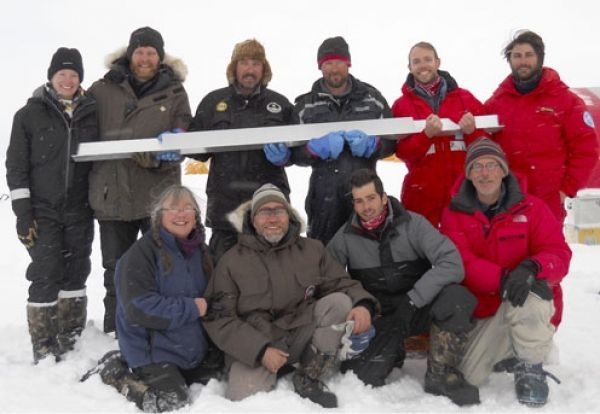Researchers from the section Physics of Ice, Climate and Earth (PICE) at the Niels Bohr Institute, University of Copenhagen, have succeeded in making a method to enlighten an otherwise dark period in climate history. Working with the ice core ReCap, drilled close to the coast in East Greenland, postdoc Marius Simonsen wondered why the dust particles from the interglacial period - the warmer period of time between the ice ages - were several times bigger than the dust particles from the ice age. His research led to the invention of a method able to map the advancement of the glaciers in cold periods and the melting in warmer periods. This data is important for the climate models we use to predict sea level rise. The result is now published in Nature Communications.
The larger particles of dust don’t travel far – they come from East Greenland
Based on the hypothesis that the bigger dust particles in the ice couldn’t have come from afar, the then PhD student, Marius Simonsen, examined the dust at select locations on the coast of East Greenland close to the drill site. The chemical composition turned out to be similar to the larger particles in the ice. The smaller particles of dust caught in the ice, on the other hand, travel from Asia, blown to Greenland by dust storms. In other words, the bigger particles of dust in the ice must mean presence of bare land close to the drill site. The ice is composed of annual layers, like the growth rings in a tree, so the distribution of large and small dust particles can be linked to the advancement and melting of the ice. Large particles mean bare land in the vicinity, small particles mean the land is covered in ice. The end of the ice age, where the ice cap is receding, is well explained scientifically, Marius Simonsen explains. “But it is very difficult to retrieve data on the period before the ice age. The ice is an extremely strong natural force, so it grinds away everything when advancing. But with the new method, we have data on the advancement of the ice. All of a sudden, we have a link to information on how quickly we enter an ice age, in a way we never used to have”.
Read more at University of Copenhagen
Image: The deepest ice core from the Renland drilling displayed proudly by the international research team that was in the camp when ground was reached. CREDIT: University of Copenhagen


